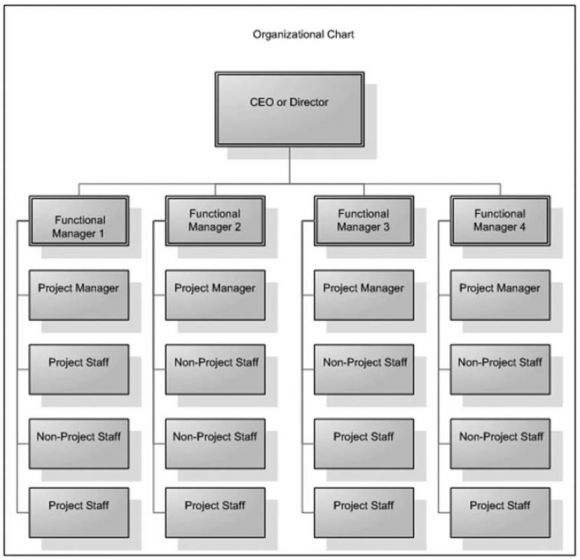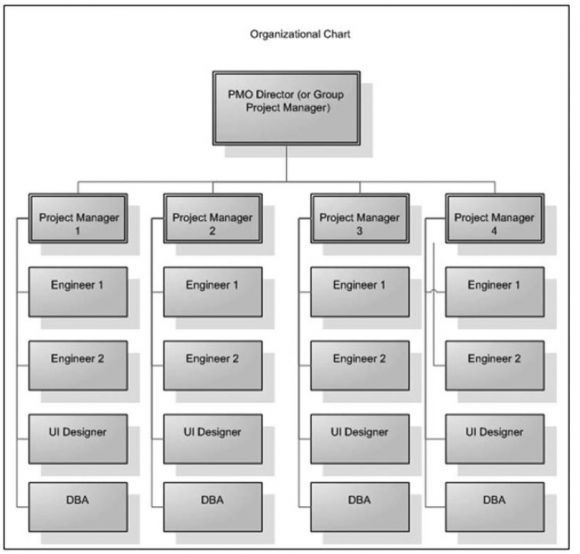The Characteristics of a Project
Editor's Note: This article is excerpted from Chapter 1 of Fundamentals of Technology Project Management
A project is an undertaking of any size, budget, or timeline that has a clearly defined start and finish and a specific desired outcome. The most important characteristic of a project is its purpose. Unless a project team knows what the specific purpose of the project is, they will be unable to undertake it.
If the project must have a purpose, then it must also have a means of measuring how well it accomplishes the purpose. A project is designing, creating, building, developing, or constructing a building, product, or service. In this book, the focus will be on managing projects for products and services in the technology and IT industries.
A project must have an owner, the person who has requested that the project is implemented. It must also have a project team, the people who will implement the project. It is possible to have a project without a project manager, but it is very difficult to have a successful project without a project manager. Uncontrolled, chaotic, unscheduled, and uncertain are words that can be used to describe unmanaged projects!
How to Measure Project Success
To measure project success, you need to determine early in the process the desired outcome of your project and how the results will be measured. If your stated outcome is not measurable, then it should be revised so that it clearly states a measurable outcome.
Unless you know how you will measure your success at the start of your project, how will you be able to document the “before” data to compare with your “after” data? It is vitally important that you have clear and accurate “before” data documented and signed off on by your client before you start. You also need to agree on when and how you will measure the results after the project has been implemented. There should be no room for differing interpretations of the results. If your measurement criteria are clear and precise, you can avoid a lot of problems later on.
Different Types of Organizational Structure
The management structure in place in an organization can take different forms. The majority of technology companies favor projectized and matrix organizational structures. However, project managers working in IT in financial services, banking, or retail, for example, may find themselves working in a traditional/functional management structure.
Traditional (Functional) Management
The traditional, or functional, organizational structure is a vertical management hierarchy. It starts with the CEO and the president and branches downwards and outwards with every employee reporting to their (vertical) line manager.
The organizational chart for a traditional management structure will look similar to the one in Figure 1.2. This system of management has worked well for many years and is still widely used in many industries.
Figure 1.2: Traditional (Functional) Organizational Chart
An advantage of the traditional management structure is that employees clearly understand to whom they report. They report to one manager, and that manager is responsible for their career management, team management, and project management. This includes setting goals and objectives, managing performance, assigning tasks, and project scheduling and prioritization.
A disadvantage of the traditional method is that the functional manager is likely managing both project and non-project staff members. This means that projects may be competing with non-project work for resources, funding, and scheduling. The project manager often has little power or influence and may function as more of a coordinator or project scheduler than as a true project manager.
Projectized Management
A projectized organizational structure is similar to the traditional/functional structure in that it is a hierarchal organization. Employees report to one manager, and that manager is responsible for their career management, team management, and project management. This includes setting goals and objectives, managing performance, assigning tasks, project scheduling, and prioritization.
The big difference between traditional and projectized management is that the project manager has a lot more influence and independence. The project manager typically manages the team members directly. The team is composed solely of project team members, so project work is not competing with non-project work for resources and funding. A project team managed by a project manager will be more effective than one led by a functional manager with little, or no, understanding of project management standards and methodologies. The organizational chart for a projectized management structure will look similar to the one in Figure 1.3.
Figure 1.3: Projectized Organizational Chart
A projectized management structure does not, unfortunately, create a project management utopia where everything is perfect! There are some disadvantages. For example, the projects may be developed too independently of each other, making it difficult to leverage the work of one project team within another. This can sometimes lead to duplication of effort or one team being underutilized while another is overburdened.
A strong program manager working with multiple project managers in a projectized organizational structure can help minimize the disadvantages and maximize the strengths of a projectized approach to project management.
Matrix Management
There are two schools of thought on the matrix management system, and they are directly opposed to one another. One believes that this method increases efficiency by decreasing development downtime. The other believes that it decreases efficiency by adding unnecessary management overhead.
This system appears to work more effectively in larger organizations where teams are working concurrently on large, complex projects.
The concept behind matrix management is that the functional manager acts as the hierarchal line manager for team members. That manager is responsible for day- to-day management of the team, which includes defining processes, procedures, and best practices for the group. The functional manager is responsible for growth and development, coaching, and setting goals and objectives for individuals. Team members have a dotted-line relationship to the project manager for each of their assigned projects. The project manager is responsible for managing the project, not the project team members. A team member may be assigned to one project or multiple projects at the same time. The project manager schedules the team member’s time for the allocated amount of hours per week, and the team member reports progress/status for assigned tasks to the project manager. In effect, this means that each team member has two (or more) managers and is a member of two (or more) teams. The team member has a specific role on each team and a specific responsibility to each manager.
The reporting relationships can be rather confusing, as shown in the example matrix management organizational chart in Figure 1.4.
Figure 1.4: Matrix Management Organizational Chart
As you can see, the dotted-line relationships are hard to distinguish after a few have been added to the chart.
One of the major disadvantages to this type of management structure is that the employee can easily find himself being pulled in too many directions. Multiple project managers may demand more of his time than he has available. This can create tension between the team member and each project manager, as well as between the project managers. The functional manager often finds herself in the position
of arbitrating between opposing project managers. If the functional manager is ineffective at setting priorities, the employee will be left to decide for himself which project takes priority, not an enviable situation for the employee or the managers involved. In a matrix organization, multiple managers are responsible for evaluating performance for each employee. This can lead to inconsistent feedback and lack of clear direction for the employee.
Under the matrix system of management, some departments are often still organized in the traditional way. HR and Finance are good examples of departments where the matrix management system does not work well. IT departments often struggle with this type of organization because they are usually responsible for existing applications (operational support) as well as for new projects (development and implementation support). The matrix system is difficult to maintain in environments where multiple functions need to co-exist within one department.
There are also mixed organization structures that combine elements of the traditional, projectized, and matrix organizational structures. Different project structures co-exist simultaneously in the same project. With the mixed organizational structure, flexibility is an advantage; however, unclear lines of responsibility and increased communication complexity are major disadvantages.
The Project Management Office
A project management office (PMO) is a centralized body assigned various responsibilities for coordinating management of projects and programs. The PMO responsibilities differ between organizations. The responsibilities may include:
- Providing project management support
- Providing project management training
- Defining and developing project management methodology and standards
- Monitoring compliance/governance of PMO standards
- Developing policies, procedures, templates, and other project artifacts
- Developing and implementing common project management terminology
- Managing shared resources
- Coaching, mentoring, and training
- Managing scope for key programs
- Enterprise-wide risk management
- Managing overall project database
- Managing communication
- Setting priorities
This is not an all-inclusive list of responsibilities. Some PMOs will have a broader set of responsibilities, and others will manage a subset of these tasks.
Some PMOs have additional responsibilities in the business decision-making process. This extends the reach of the PMO into areas such as project approval, project funding, and human resources. This crossover into business management is more common when the PMO is managed by a business leader rather than a technical or project management leader.
The PMO may be composed of one or two people or may be a substantial team. Large organizations often have an entire PMO department with several full-time employees responsible solely for running the PMO. Program managers generally report into the PMO either directly or through a dotted-line relationship to the PMO leader. Project managers may report directly into the PMO or may report to a program manager who manages communication and coordination with the PMO.
The PMO ideally will have a senior management “champion” to ensure that PMO standards are implemented across the enterprise. If the standards are considered optional rather than required, the potential benefits of the PMO will not be realized.



















 Business users want new applications now. Market and regulatory pressures require faster application updates and delivery into production. Your IBM i developers may be approaching retirement, and you see no sure way to fill their positions with experienced developers. In addition, you may be caught between maintaining your existing applications and the uncertainty of moving to something new.
Business users want new applications now. Market and regulatory pressures require faster application updates and delivery into production. Your IBM i developers may be approaching retirement, and you see no sure way to fill their positions with experienced developers. In addition, you may be caught between maintaining your existing applications and the uncertainty of moving to something new. IT managers hoping to find new IBM i talent are discovering that the pool of experienced RPG programmers and operators or administrators with intimate knowledge of the operating system and the applications that run on it is small. This begs the question: How will you manage the platform that supports such a big part of your business? This guide offers strategies and software suggestions to help you plan IT staffing and resources and smooth the transition after your AS/400 talent retires. Read on to learn:
IT managers hoping to find new IBM i talent are discovering that the pool of experienced RPG programmers and operators or administrators with intimate knowledge of the operating system and the applications that run on it is small. This begs the question: How will you manage the platform that supports such a big part of your business? This guide offers strategies and software suggestions to help you plan IT staffing and resources and smooth the transition after your AS/400 talent retires. Read on to learn:
LATEST COMMENTS
MC Press Online